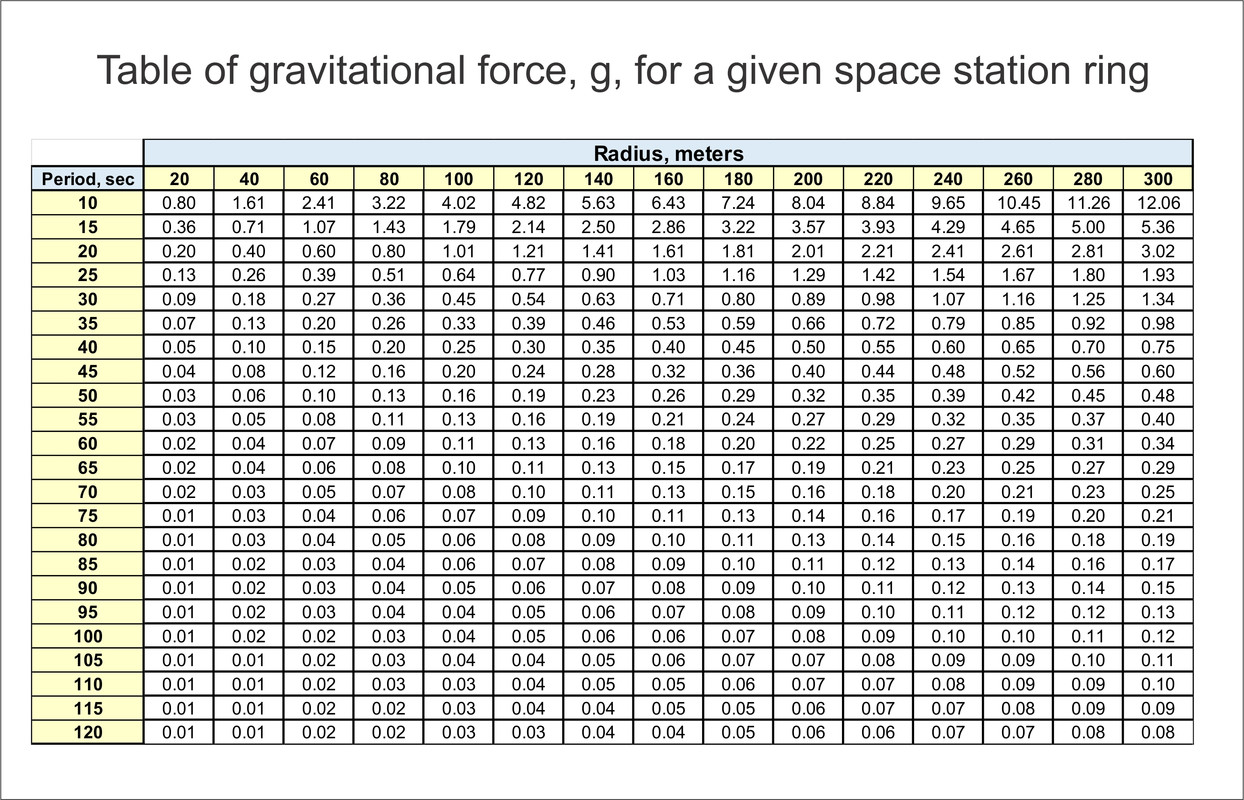For a person standing the rotational direction in a room rotating on a flat disc on the ground is around a vertical axis (yaw) instead of head over heels rotation around a horizontal axis (pitch); from the point of view of the inner ear canals the sensations are very similar but from a keeping balance point of view the actual head over heels tumbling sensations of a spinning space station or ship could be worse.Although I wonder if it’s possible these rotating rooms and small centrifuges problem was not the artificial G but the artificial G combined with an equally powerful earth G which confused the ear?
From the perspective of the person and their inner ear they will be in a 100m diameter structure, just with a faster spin rate. To overcome the problem it needs slower spin rates. Not sure but the mass and motions of such a rail system would defeat the purpose of reducing the engineering stresses within the structure.But how about a large enough ring structure, let’s say 100 meter diameter with sleeping pods that insert into the structure and go round and round on rails on the inside of the ring. Like cars on a circular rollercoaster.
Possibly we could turn to medical intervention... but losing or diminishing that balance sense would be debilitating. Or else replacing it with some kind of prosthetic vestibular organ - but that is drastic and currently beyond our abilities.



